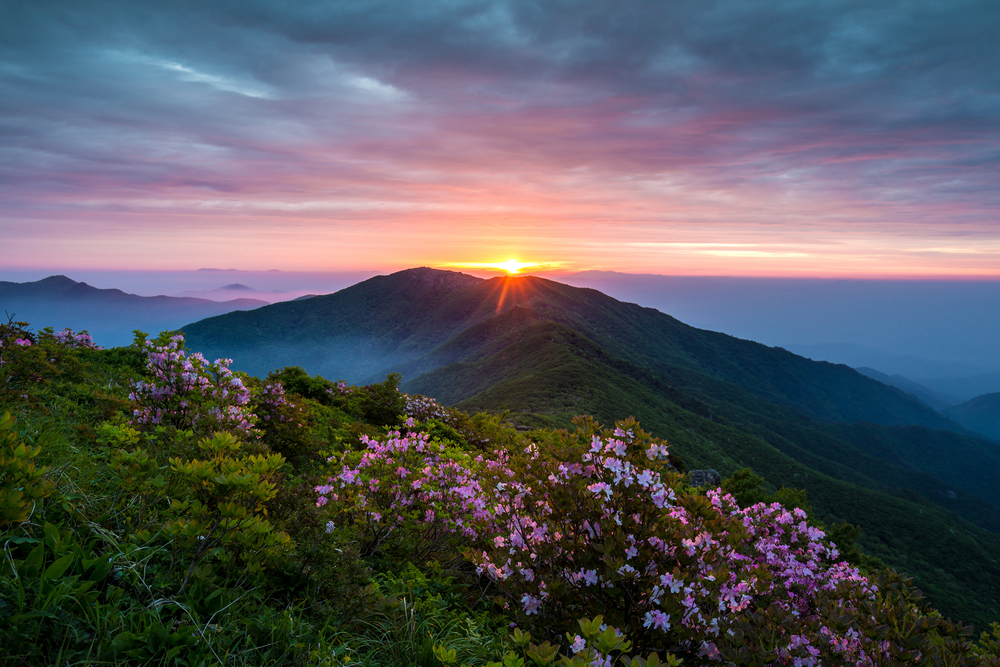Sobaeksan Overview
Sobaeksan National Park (소백산국립공원) is one of South Korea’s treasured national parks, situated in the central region of the country. The park spans approximately 148 square miles (383 square kilometers) and is shared by the provinces of North Chungcheong and North Gyeongsang. Established in 1987, Sobaeksan National Park is named after Mount Sobaek, a prominent mountain in the Baekdudaegan mountain range, which serves as the backbone of the Korean Peninsula. Its name, “Sobaek,” translates to “small white mountain,” reflecting its grandeur and the ethereal beauty often shrouded in mist.
The park is renowned for its dramatic landscapes, which include rugged mountain peaks, serene valleys, and dense forests. Mount Sobaek itself rises to an elevation of 4,721 feet (1,439 meters) above sea level, offering panoramic views of the surrounding area. The park is dotted with numerous waterfalls and streams, including the stunning Seokryu Falls, which cascades gracefully through the lush forest. The terrain is a mosaic of rocky ridges, alpine meadows, and slopes carpeted with colorful wildflowers in spring and summer. Towering Korean firs and yews dominate the higher elevations, while the lower regions are home to deciduous forests that blaze with fiery hues in autumn.
Wildlife enthusiasts will find Sobaeksan National Park a haven for biodiversity. The park is home to a variety of mammals, including Korean roe deer, wild boars, and Eurasian badgers. Birdwatchers may spot the rare black-capped kingfisher, the elegant Mandarin duck, or the majestic golden eagle soaring high above the peaks. In addition to its fauna, the park is celebrated for its flora, particularly its dense forests and the native royal azaleas that bloom in stunning profusion during the spring season, painting the mountainsides in hues of pink and purple.
Visitors are drawn to Sobaeksan National Park for its natural beauty and cultural significance. The park is home to the historic Buseoksa Temple, a UNESCO World Heritage Site that dates back to the Silla Dynasty and offers a glimpse into Korea’s spiritual and architectural heritage. Hiking is the most popular activity in the park, with well-maintained trails leading to key summits such as Birobong Peak. Night hiking is also a unique experience here, as Sobaeksan is designated a Dark Sky Park, offering unparalleled stargazing opportunities. Seasonal festivals, such as the Royal Azalea Festival, further enhance the park’s allure.
Conservation efforts at Sobaeksan have focused on protecting its diverse ecosystems and maintaining its cultural landmarks. While the park faces challenges such as visitor management and the impact of climate change on its flora and fauna, successful reforestation programs and sustainable tourism initiatives have significantly contributed to preserving its natural and cultural treasures. The park stands as a testament to South Korea’s commitment to environmental stewardship.










































































